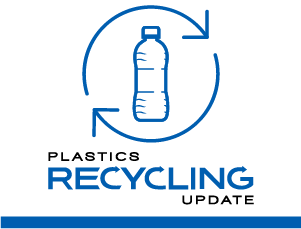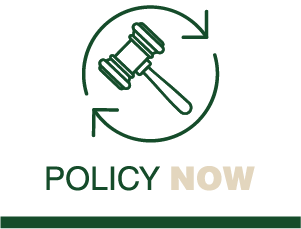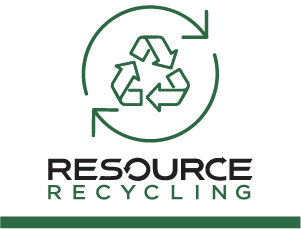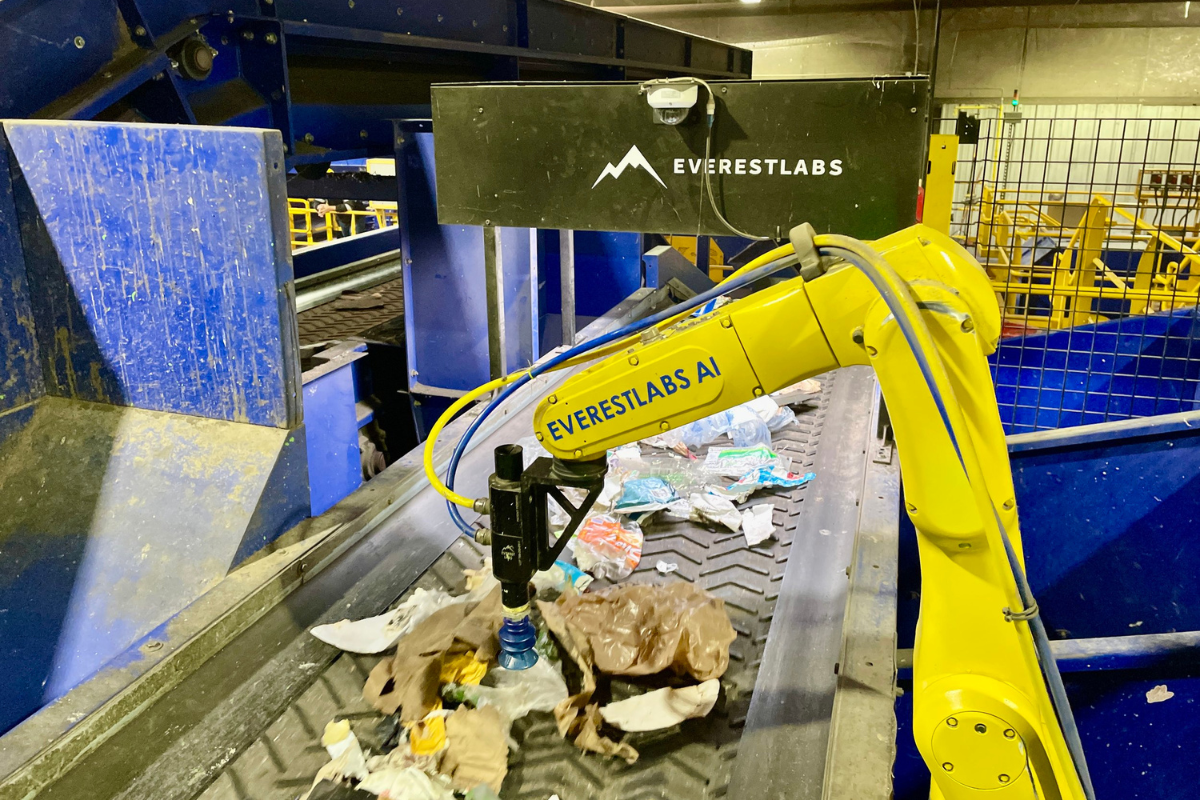After many weeks of shifting narratives and uncertainty, participants in recycled commodity markets are working to navigate the new tariff environment, in which buyers and sellers as well as customs officials struggle to align federal mandates with on-the-ground implementation.
On April 2, President Donald Trump enacted steep tariffs on goods from most other countries, citing inequities in trade relationships. Although Trump has maintained his commitment to tariffs since his inauguration on Jan. 20, throughout February and March he threatened, delayed, imposed, suspended and delayed again various measures – in the process removing any semblance of calm from commodity buyers and sellers alike.
“The big problem right now is there’s not complete clarity,” said James Derrico, vice president of new business at commodity brokerage Cellmark, in an interview with Resource Recycling. For example, for RPET resin making its way to the U.S. from areas that include Southeast Asia and Canada, the back-and-forth tariff dialogue can significantly and unpredictably increase costs, he said.
“We crossed the border with material that had been scheduled that day to cross (before tariff implementation), and then we got billed for it,” he said, adding that the tariff applied to the RPET resin was incorrect when compared to what the administration had previously indicated. “So we don’t even know. We’re like, well, you want the wrong rate. And two, is this real?”
The lack of clarity also is forcing market players to interpret the regulations to the best of their ability. For example, Cellmark believes its commodities are covered under the U.S.-Mexico-Canada Agreement. The Recycled Materials Association has stated that recycled material imports into the U.S. from Canada and Mexico qualify for the USMCA tariff exemption, provided they were collected in North America and that the importer goes through a process of certifying the material’s origin.
In recycled fiber markets, so far pulp and paper products traded between the U.S. and Canada and Mexico are exempt, according to Ryan Fox, corrugated market analyst at Bloomberg Intelligence. A federal list of exemptions also seems to support this interpretation. However, the cardboard boxes made from the raw materials are subject to tariffs, and demand for the finished product is the driving force, he said in an interview with Resource Recycling.
But raw materials coming from outside North America are also subject to a 20% tariff, and European mills are balking at paying an extra $200 or $300 per ton and want someone else to pay it, Fox said.
Cellmark’s Derrico agreed, saying neither buyers nor sellers are keen to pay more, and it’s unclear who should be paying the added costs. With the previous round of tariffs in 2018-2019, “we got a pretty big slap on paper crossing” between the U.S. and Asia, he said. As a result, all of Cellmark’s supply contracts include clauses to account for tariffs, he said, though the majority of the company’s business is done on a spot basis.
Capacity shuffling?
One upside is that the tariffs could cause producers to leverage domestic production capacity, according to Rabobank’s most recent containerboard quarterly report.
“In the short term, it may lead to producers reshuffling their supply chain to keep fiber within the country borders,” wrote Xinnan Li, senior analyst of packaging and logistics at Rabobank. An example of the implications of shuffling production is evident in the automotive sector. GM recently announced it would temporarily shift some truck production from its Canadian and Mexican plants to one in Fort Wayne, Indiana.
But the full implications of such a shuffle are complex, especially on a local level. For example, the idling of Stellantis plants across the U.S. border as a result of tariffs will also result in temporary layoffs for about 900 U.S. workers making parts that are shipped to the Canadian and Mexican assembly plants, according to the Detroit Free Press.
In addition, shifting production can complicate an accurate assessment of demand, Fox said.
Support for domestic price increases?
Corrugated boxes imported into the U.S. from Europe – specifically white top – have typically been priced well below their domestic counterparts, Fox said.
Whether domestic sellers will continue to seek price increases remains to be seen, Fox said, adding that anticipations of lower demand do not support price hike initiatives. Bloomberg’s latest projections show box shipments in the first quarter will be lower by 1.5% on the year, he said. Paper fiber companies have increasingly decoupled from industry indexes that have not reflected their individual efforts to raise prices amid ample capacity and moderate demand.
“It’s kind of one thing to talk about what the tariffs could do on paper, but it’s really more of what tariffs are doing to the box buyers, because they’re seeing demand for their product disappear,” Fox said.
For instance, tariffs on American liquor will result in a decrease in shipments outside the U.S., and subsequently lead to lower demand for the boxes the liquor is shipped in.
Bloomberg’s most recent industry survey showed that expectations for corrugated box demand have turned more bearish for demand in April, compared to the beginning of the year. Responses were “relatively positive” at the end of January, but by the end of March “it was much more negative,” Fox said, with respondents citing on-again, off-again tariffs and customers waiting to purchase amid the uncertainty.
“I think the most important thing to remember at this point is that some of this stuff is literally changing on a daily basis,” Fox said. “We don’t know if it’s going to or how long it’s going to stick around.”
Comparisons to previous disruptions
Despite weeks of leadup, the administration’s waffling made implementation seem sudden, as the market could not be sure the tariffs were more than mere threats or “negotiating tools.” In 2019, the first Trump administration gave a 30-day notice for its tariff measures against China. That gave buyers and sellers time to determine how they wanted to proceed, Derrico said.
“It’s a little bit different (now), and it’s kind of scary in that as of today, it’s still not clear if things are exempt or not, and what tariff rate is applied to each shipping lane.” As a result, Cellmark is waiting to ship new loads until the company gains clarity, he said.
In a recent blog post for Canada’s Paper and Paperboard Packaging Environmental Council, Executive Director Rachel Kagan also compared the current developments to previous market disruptions. “We have seen before how external policy decisions can have impacts on local markets,” she wrote, citing China’s 2018 National Sword policy that restricted imports of materials considered to be waste.
But China’s policy presented an upside, as evidenced in a Q&A PPEC conducted with Paulina Leung, chief sustainability officer at member company Emterra. “It opened up new markets in new countries and highlighted the need to ‘onshore’ recycling in Canada and in North America,” Leung said, adding that “the need for recyclers to have a diversified customer base can never be underestimated.”
In addition to adding another layer of complexity to brand owners’ progress on incorporating recycled materials, even a threat of tariffs creates uncertainty that stymies short- and long-term planning, which “could impact or even delay progress or investments in corporate waste reduction and sustainability initiatives,” Kagan wrote, echoing the complaints of market players who declined to comment publicly, due to the constantly shifting market conditions and fear of retribution.

























